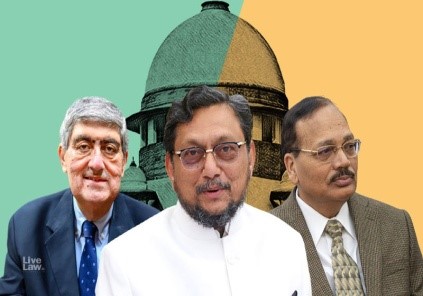
APPOINTMENT OF AD HOC JUDGES
APPOINTMENT OF AD-HOC JUDGES
Recently, the Supreme Court pushed for the appointment of retired judges to battle the pendency of cases in High Courts. The court orally outlined prospective guidelines for the appointment and functioning of an ad-hoc judge. If in a particular jurisdiction, the pendency goes beyond a certain limit, say eight or 10 years, the Chief Justice may appoint a certain [retired] judge with expertise in those fields of laws as an ad hoc judge. The term of such a judge could be extendable. The appointment of ad-hoc judges would not be a threat to the services of other judges as the Ad-hoc judges will be treated as the junior most. The retired judges would be chosen on the basis of their expertise in a particular field of dispute and allowed to retire once the pendency in that zone of law was over.
ARGUMENTS FOR APPOINTING RETIRED JUDGES

The retired judges who had handled certain disputes and fields of law for over 15 years could deal with them faster if brought back into harness as ad-hoc judges. The Supreme Court at the apex of the Indian Judiciary is the highest authority to uphold the Constitution of India, to protect the rights and liberties of the citizens, and to uphold the values of rule of law. Hence, it is known as the Guardian of our Constitution. The Indian Constitution provides for a provision of the Supreme Court under Part V (The Union) and Chapter 6 titled 'The Union Judiciary'. The Constitution of India has provided an independent judiciary with a hierarchical setup containing High Courts and Subordinate Courts under it.
RELATED CONSTITUTIONAL PROVISIONS
Appointment of ad hoc judges- Article 127 states that if at any time there is lack of quorum of Judges of Supreme Court, the CJI may with the previous consent of the President and Chief Justice of High Court, concerning request in writing the attendance of Judge of High Court duly qualified to be appointed as Judge of the Supreme Court.
Appointment of retired judges of the Supreme Court or High Court - Article 128 states that the CJI at any time with the previous consent of the President and the person to be so appointed can appoint any person who had previously held the office of a Judge of SC.
Appointment of acting Chief Justice- Article 126 states that when the office of CJI is vacant or when the Chief Justice is by reason of absence or otherwise unable to perform duties of the office, the President in such case can appoint the Judge of the court to discharge the duties of the office.
REASONS FOR PENDENCY OF CASES

- The Government is the Biggest Litigant: According to the Economic Survey 2018-19 poorly drafted orders have resulted in contested tax revenues equal to 4.7% of the GDP and it is rising.
- Less Budgetary Allocation: The budget allocated to the judiciary is between 0.08 and 0.09% of the GDP. Only four countries — Japan, Norway, Australia and Iceland — have a lesser budget allocation and they do not have problems of pendency like India.
- Practice of Seeking Adjournments: Usually the lower courts seek adjournment ad infinitum.
- Lack of Assessment: When a new legislation is formed, there is no judicial impact assessment done by the government on how much burden is going to be casted on the judiciary. The probabilities of generating more litigations or requirement of more judges are not taken into account.
- Delay in Judicial Appointment: Collegium recommendations have been pending with the government for over seven months to a year to get approval in order to fill vacancies in High Courts. The total sanctioned judicial strength in the 25 High Courts is 1,080. However, the present working strength is 661 with 419 vacancies as of March 2021. The government has countered that it's the fault of the Collegium and the High Court for delaying the process.
CONCLUSION
- Streamlining the Appointment System: The vacancies must be filled without any unnecessary delay. A proper time frame for the appointment of judges must be laid down and the recommendations must be given in advance. The Constitution of the All India Judicial Services is also an important factor which can definitely help India establish a better judicial system.
- Use of Technologies: People are becoming more and more aware of their rights and which is why the number of cases filed in court are also increasing. To deal with that judicial officers need to be trained, vacancies for the judges must be filled up expeditiously and in addition the use of technology particularly artificial intelligence must be encouraged.
- Out of Court Settlement: Resolving every case within the court premises is not mandatory; other possible systems must also be accessed. There is also a need to promote the alternate dispute resolution mechanism for which the arbitration and conciliation act has been amended three times to ensure that people go for commercial litigation mode and sort it out either by mediation, conciliation or arbitration.













kpyevhmzh
Latest News on Education & LAW Exams Blogs | Success Mantra [url=http://www.g45qts208714r39w3v1oc863ltzqbfk2s.org/]ukpyevhmzh[/url] <a href="http://www.g45qts208714r39w3v1oc863ltzqbfk2s.org/">akpyevhmzh</a> kpyevhmzh http://www.g45qts208714r39w3v1oc863ltzqbfk2s.org/